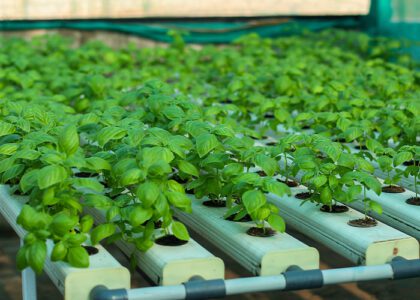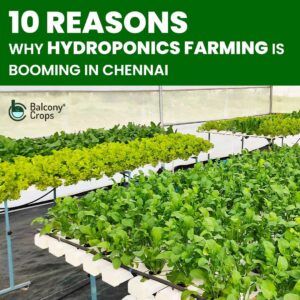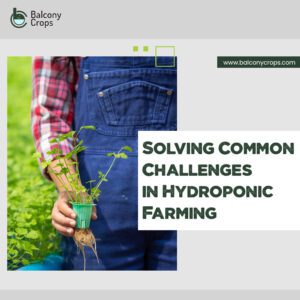Table of Contents
Introduction:
If you’ve been considering hydroponic farming as an innovative and efficient way to grow your own produce, you’re in the right place. In this blog post, let’s explore the fascinating realm of hydroponics and compare its costs to traditional agriculture. By the end, you’ll have a clear understanding of the financial implications of hydroponic farming and how it stacks up against conventional methods. So, let’s dive in and explore the intriguing world of cost analysis in hydroponics!
Cost Analysis: Hydroponic Farming vs Traditional Agriculture:
When it comes to agriculture, understanding the costs involved is crucial for aspiring farmers. Hydroponic farming, a soilless cultivation method, has gained traction in recent years due to its numerous advantages. However, it’s essential to assess the financial aspects before taking the plunge.
Let’s conduct a detailed cost analysis and compare hydroponic farming with traditional agriculture to gain valuable insights into their economic implications.
Initial Setup Costs:
In traditional agriculture, the initial setup costs involve land acquisition or leasing, clearing and preparing the soil and purchasing seeds, fertilizers, and equipment like tractors, plows, and irrigation systems. These costs can vary significantly based on the size of the farm and the specific crops being cultivated. Traditional farming methods often require extensive infrastructure and equipment investments, which can be substantial for commercial operations.
Hydroponic farming, on the other hand, requires a different set of initial investments. The primary expenses include purchasing or constructing the hydroponic system and obtaining the necessary equipment such as grow lights, pumps, timers, and nutrient solutions. Hydroponic farming has a higher upfront investment due to the extensive infrastructure required.
While these upfront costs may seem higher compared to traditional agriculture, hydroponics focuses more on specialized equipment tailored to the controlled environment. However, it’s important to consider the long-term benefits, such as higher yields, year-round production, and reduced resource consumption, which can lead to better returns on investment in hydroponics.
Operational Costs:
In traditional agriculture, ongoing operational costs can include expenses for water usage, fertilizers, pesticides, herbicides, and labor. Irrigation systems, fuel for machinery, and maintenance of equipment also contribute to the overall operational expenses. Additionally, the dependence on weather conditions and the risk of pests and diseases can result in higher costs associated with crop protection and remediation.
Hydroponic systems are designed for efficient resource utilization, resulting in potential cost savings. Water consumption in hydroponics is significantly lower compared to traditional agriculture, as it involves recirculating nutrient solutions that minimize wastage. Additionally, hydroponic farming requires fewer or no pesticides, reducing the associated costs. While energy consumption for lighting and climate control is a consideration, advancements in energy-efficient technologies help optimize electricity usage.

When comparing operational costs, hydroponic farming offers advantages in terms of water efficiency and reduced reliance on pesticides. Traditional agriculture, on the other hand, may incur higher expenses for water usage, crop protection, and machinery maintenance. However, it’s crucial to consider factors such as energy consumption in hydroponics. By implementing energy-efficient practices and utilizing renewable energy sources, hydroponic farmers can mitigate energy costs and further enhance the overall cost-effectiveness of their operations.
Water Efficiency:
Water is a precious resource in agriculture, and traditional farming methods often involve irrigation techniques that can be water-intensive. In arid regions like Chennai, water scarcity is a significant concern. Traditional farmers may need to invest in irrigation systems and face higher water costs due to extensive water requirements. Additionally, unpredictable weather patterns and evaporation contribute to water wastage.
Hydroponic farming provides a sustainable solution to water usage challenges. By using recirculating systems and precise nutrient delivery, hydroponics minimizes water wastage. The controlled environment ensures that plants receive the right amount of water, reducing the need for excess irrigation. This efficient use of water not only saves costs but also addresses environmental concerns related to water scarcity.
Hydroponic farming offers a significant advantage. By reducing water usage and eliminating runoff, hydroponics provides a more sustainable approach to agriculture. Traditional agriculture, on the other hand, may face higher costs and challenges associated with water availability and conservation. Embracing hydroponics can not only save costs but also contribute to water conservation efforts, making it an attractive choice for farmers in water-stressed regions.
Energy Consumption:
Traditional agriculture relies on natural sunlight for crop growth, eliminating the need for artificial lighting. However, certain operations like irrigation, machinery, and storage facilities may require electricity. The energy consumption in traditional farming varies depending on the scale of operations, the use of machinery, and the reliance on climate control systems.
Hydroponic systems often incorporate artificial lighting to provide optimal conditions for plant growth. Grow lights, timers, and climate control systems consume electricity, contributing to energy costs. However, advancements in energy-efficient technologies, such as LED grow lights, have significantly reduced energy consumption in hydroponics. Additionally, renewable energy sources like solar panels can be utilized to offset energy expenses
While hydroponic farming may require electricity for lighting and climate control, advancements in energy-efficient technologies make it a viable option. By using energy-efficient equipment and exploring renewable energy sources, hydroponic farmers can minimize energy consumption and associated costs. Traditional agriculture, though primarily reliant on natural sunlight, may still have energy costs for auxiliary operations. Considering the potential for energy savings and sustainability, hydroponic farming showcases its cost-effectiveness in the long run.
Labor Requirements:
Traditional farming often requires a significant labor force for tasks such as planting, watering, weeding, and harvesting. The labor costs associated with hiring and managing a workforce can be substantial, especially during peak seasons when more hands are needed. The physical nature of traditional farming also entails potential health and safety risks for laborers.
Hydroponic systems rely more on automated processes, reducing the dependency on manual labor. While initial setup and maintenance may require skilled labor, the day-to-day operations in hydroponics are less labor-intensive. Tasks like planting, nutrient management, and harvesting can be streamlined through automated systems and efficient processes.
In terms of labor costs, hydroponic farming presents an advantage over traditional agriculture. With reduced reliance on manual labor, hydroponics minimizes the associated expenses, especially during peak seasons. While initial setup and maintenance may require skilled labor, the long-term labor costs in hydroponics are typically lower. This cost advantage, along with the potential for a safer working environment, makes hydroponic farming an attractive option for those seeking to minimize labor-related expenses.
Yield and Production:
The yield and production in traditional agriculture are influenced by various factors, including weather conditions, soil quality, and crop management practices. While traditional methods have been refined over centuries, they are subject to the limitations imposed by natural conditions. Yield fluctuations and seasonal production can impact profitability, making it essential for traditional farmers to diversify crops and optimize cultivation practices.
Hydroponics offers precise control over growing conditions, resulting in consistent yields and year-round production. By providing plants with the ideal nutrient balance and environmental parameters, hydroponic systems can maximize productivity. The controlled environment also reduces the risk of crop loss due to factors like pests, diseases, and extreme weather conditions. The ability to produce high-quality crops consistently can enhance profitability in hydroponic farming
.
Hydroponic farming demonstrates significant advantages in terms of yield and production. The controlled environment allows for consistent and predictable crop yields throughout the year, reducing the uncertainties associated with seasonal variations. Traditional agriculture, while resilient and adaptive, is subject to the unpredictability of natural conditions. By maximizing productivity and minimizing crop losses, hydroponic farming offers a more reliable pathway to profitability.
Long-term Sustainability:
The long-term sustainability of traditional agriculture depends on factors such as soil health, water availability, and environmental impact. Soil erosion, depletion of nutrients, and pesticide contamination are concerns that require ongoing management. Traditional farmers must invest in sustainable practices like crop rotation, conservation tillage, and organic farming to ensure the long-term viability of their operations.
Hydroponics inherently embodies sustainable principles. By utilizing water-efficient systems, reducing pesticide use, and optimizing resource utilization, hydroponic farming minimizes the environmental footprint. Moreover, the controlled environment minimizes the risk of soil degradation and allows for efficient land use. As a result, hydroponics offers a sustainable approach that can generate consistent returns on investment over the long term.
When evaluating the long-term sustainability of hydroponic farming versus traditional agriculture, hydroponics showcases a compelling case. The reduced reliance on soil, efficient resource utilization, and minimized environmental impact position hydroponics as a sustainable farming method. While traditional agriculture can adopt sustainable practices, hydroponics inherently integrates these principles into its design. By investing in hydroponics, farmers can enjoy the benefits of sustainable cultivation practices and secure long-term returns on their investments.
Hydroponic Farming Vs Traditional Farming: Compared:
| Aspect | Hydroponic Farming | Traditional Agriculture |
| Cost Analysis | Generally higher initial setup costs, but the potential for higher returns over time. | Lower initial setup costs, but ongoing expenses can be significant. |
| Water Usage | Significantly lower water usage compared to traditional farming methods. | Relatively higher water usage due to evaporation and inefficient irrigation systems. |
| Land Requirement | Requires less land space, making it suitable for urban and indoor farming. | Requires larger land areas for crop cultivation. |
| Crop Growth and Yield | Provides controlled conditions for optimized growth and higher crop yields. | Crop growth and yields can be influenced by weather conditions and soil quality. |
| Pest and Disease Control | Reduced pest and disease risks due to controlled environments. | Requires more frequent pest and disease management measures. |
| Nutrient Management | Precise nutrient control and monitoring for optimal plant growth. | Nutrient management relies on soil quality and organic matter. |
| Environmental Impact | Lower environmental impact with reduced water usage and no soil erosion. | Potential for soil erosion, water pollution, and reliance on chemical inputs. |
| Seasonal Independence | Can provide year-round crop production regardless of the season. | Crop availability depends on seasonal changes and climate conditions. |
| Labor Requirements | Generally requires less manual labor compared to traditional farming. | Labor-intensive with a need for more manual tasks such as tilling and harvesting. |
| Crop Diversity and Variety | Suitable for a wide range of crops with potential for exotic or specialty varieties. | Relies on crop suitability based on soil and climate conditions. |
Conclusion:
In the cost analysis of hydroponic farming versus traditional agriculture, it becomes evident that while hydroponics may require higher initial investments, its long-term benefits outweigh the costs. Water efficiency, reduced energy consumption, lower labor requirements, and higher yields contribute to the economic viability of hydroponic systems.
Ready to explore the world of hydroponic farming and unlock its cost-effective potential?
Take the leap into the world of hydroponic farming today! Start your journey with Balconycrops and unlock the potential of sustainable, high-yield cultivation.
Don’t miss out on the opportunity to revolutionize your farming practices and grow your own fresh produce. With Balconycrops‘ expertise and a range of hydroponics kits tailored to Chennai’s needs, you can confidently venture into commercial hydroponic farming with a promising return on investment.
Let’s cultivate a greener future together!









